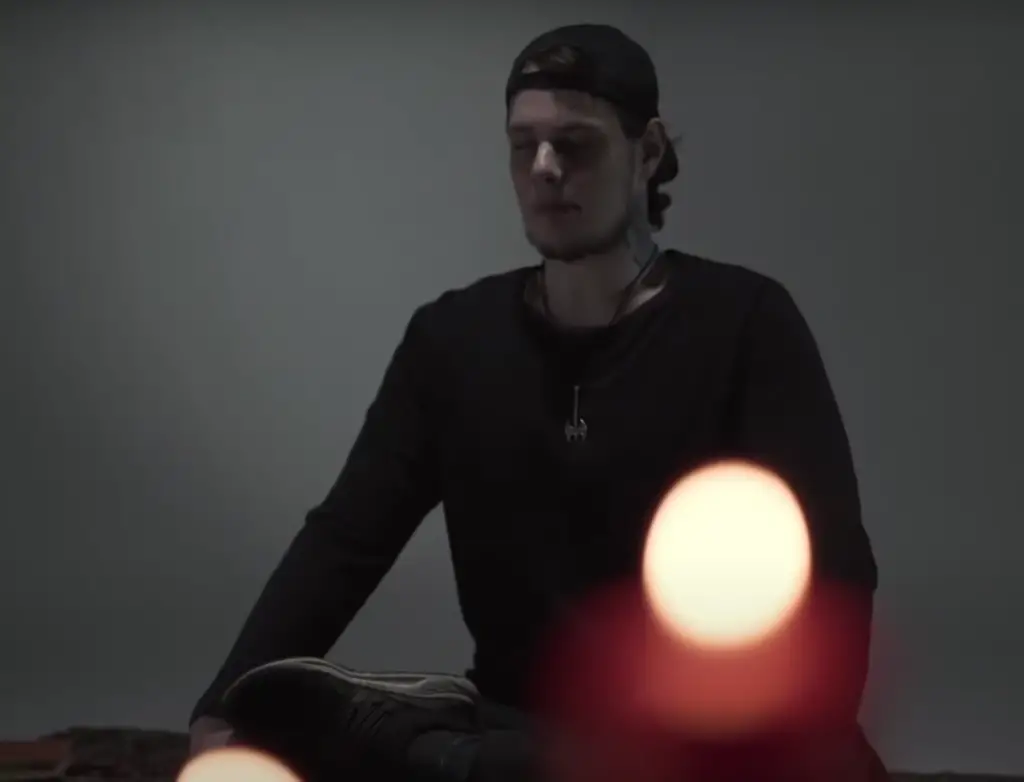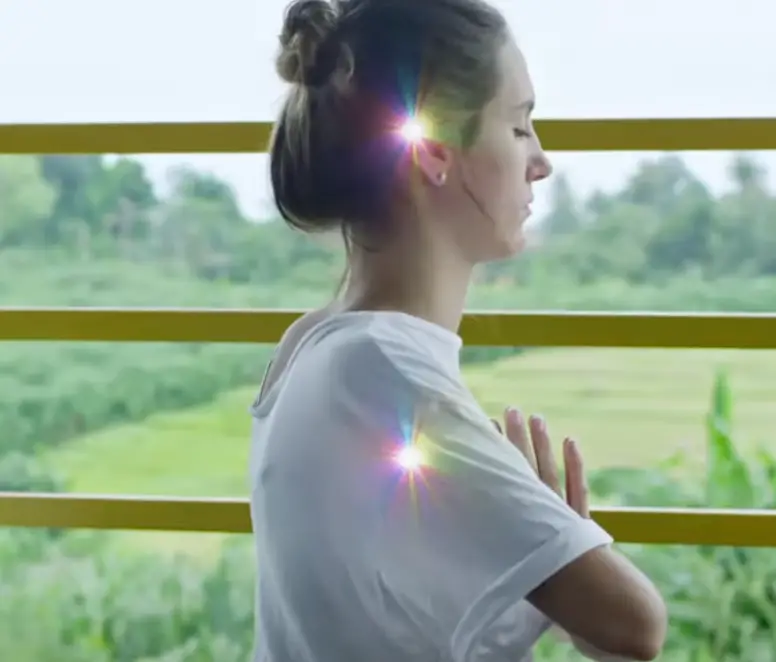Merkaba practitioners believe that their bodies are surrounded by energy fields. These fields are supposed to rotate at high speeds around us.
However, the toils of our daily life leave our bodies and spirit polluted with negative energy, thus slowing down the rotation of the said energy fields.
This is where Merkaba breathing comes in. The practitioners of this meditation believe that this systemic breathing technique can help you get rid of the negative energy fields.
If you’re interested, stick with us as we’ll be sharing the origin, meaning, and technique of performing Merkaba meditation.

Origin of Merkaba
The word Merkaba, also called Merkava and Merkavah, is an aggregate of three ancient Egyptian separate words, Mer, ka, and ba. Mer means a light rotating around an axis, ka refers to your spirit, whereas ba means the human body.
Believers of the Merkava mysticism from ancient Babylonia believed that to cleanse your body and spirit of all negativities, you need to perform meditation.
This eventually led to the creation of the modern Merkaba meditation technique.
The Symbol of Merkaba Meditation and Its Meaning
Merkaba meditation is denoted by a star tetrahedron. The geometric shape is quite interesting as it consists of two pyramids facing opposite directions.
However, the center of the triangles are the same, so they look like a star.
These pyramids represent the harmony between male and female energy. The concept is comparable to Yin and Yang, which means light and dark co-exist in harmony.
The Concept Behind Merkaba Meditation
According to believers of mysticism, human beings run on spiritual energy called “prana” or “chi.” The prana exists everywhere and flows into our body through the top of our skull, also known as the crown.
To bolster their belief, they argue that this is why babies have a hole in their skull in early embryonic stages that facilitates the prana flow more easily. With our growth, the soft spot of our crown gradually hardens and restricts the intake of prana considerably.
Once the prana enters, it flows through eight chakras or turning wheels placed throughout our spine, including the crown chakra. The chakras also branch out to every cell of our body to ensure a proper supply of energy.
As per their belief, this creates several layers of electromagnetic fields throughout our bodies. These fields reflect our moods, thoughts, and feelings.
Out of them, we can consciously control two fields, the upward and downward-facing pyramids. This is where they derive the symbol from.
The practitioners of Merkaba meditation claim that with proper control over these two energy fields, you’ll have more control over your mood, decisions, and life.
One important requirement of all this is that you should hold love energy while performing Merkaba.
Also, it is supposed to take you to a higher-dimensional understanding of peace and harmony if done right.
How to Practice Merkaba Breathing Meditation?

Now that you know the basic concept of Merkaba meditation, it’s time to learn how to perform it. Let’s go through the process step-by-step.
Before You Begin
It is believed that Merkaba meditation can help you enhance your higher self. However, it’s important that you stay in the right set of mind while you practice meditation.
While performing the meditation, you should not focus on negativities or hold any thought or feeling that might lead to negative energy.
So, try to begin with a blank mind so you can invest all of your focus in the process.
First Breath
The first breath requires you to open your heart to the world.
Whilst you do that, you need to manifest the sun tetrahedron, the one that points upward and visualize a white light surrounding you.
Even if you can’t visualize it, you should try feeling that you’re surrounded by it.
Now it’s time to initiate the first breath. To do so, you need to keep your palms facing upward with your thumb meeting your first finger.
The breathing has to be done in a yogic manner. Breathe in with your nostrils. Create the pressure with your stomach first, then with your diaphragm, and finally with your chest.
While exhaling, let go of the pressure using your abdomen while keeping your chest firm.
It’s important to breathe rhythmically. To create a rhythm, count up to seven while you inhale and exhale.
While exhaling, try to bring your eyeballs as close as possible to each other. Once you’ve reached the far corner, look up slowly and then look down.
This may cause a tingling sensation, but that’s normal. Also, focus on the female tetrahedron while you’re exhaling.
Second Breath
In the second breath, you will have to open your heart for the love of the world, just like in the first breath. During this breath, try to become more aware of the tetrahedron aura of your spirit.
The only difference between the first breath and the second one is in the formation of your fingers.
In this breath, you’ll have to adopt a slightly different pose where your thumb will meet your middle finger.
Third Breath
The heart opening will be the same as the previous breaths. Your body will keep the same mudra too.
The only change is you have to position your thumb on the third finger.
Fourth Breath
In the fourth breath, you’ll be breathing in the same yogic manner as previous breaths, and you’ll position your thumb on your little finger.
Fifth Breath
In the fifth breath, you’ll switch to the exact mudra of the first breath, where you place your thumb on your index finger.
The breathing technique and heart opening shall be the same as the previous ones.
Sixth Breath
The breathing technique, heart, and visualizations remain the same, and your thumb will be touching your middle finger. This step is very important as it marks the end of the cleansing process.
Upon performing the first six breaths properly, you’ll have balanced your prana sphere.
Seventh Breath
The breathing technique changes completely from the seventh breath. From this point on, you won’t have to imagine tetrahedrons.
Rather, you’ll need to imagine a tube that runs through the center of both the tetrahedrons through your spine. This tube will extend a handover and under you.
The mudra for the next seven breaths will be the same. In this, your palms will be facing upwards with your thumb, first, and second finger touching.
The breathing technique will be more continuous, with seven seconds for inhaling and seven for exhaling.
As always, you’ll have to keep your heart full of love. The trick is to visualize the tube running through your spinal cord.
Once you start breathing, you’ll have to visualize the golden light of prana flowing into the tube both from the top and the bottom.
The two flows of prana will meet at the navel level of your body inside the tube.
When you inhale, a small orb of white light forms at the point where the two prana flows meet. As you keep on breathing, this orb grows in size.
There are some minor changes to the exhalation process too. Even as you exhale, the orb of white light at your navel continues to expand.
In this state, you shouldn’t force the air out of your lungs. Rather, you should wait until the air naturally gets out.
Eighth Breath
While you inhale the eighth breath, you’ll visualize the orb still growing. However, as you begin to exhale, the orb will have grown to the maximum size.
There is no standard maximum size, so you don’t have to be concerned about that.
Ninth Breath
As the prana sphere can’t grow any larger, it will start to concentrate by the ninth breath. So, it’ll get brighter as you inhale and exhale for the ninth time.
Tenth Breath
The prana sphere becomes the strongest. At this point, you have to exhale with some pressure on your lips.
This will prompt the sphere to burst, leaving you enclosed in a sphere of white light. However, this form isn’t stable, so you’ll have to breathe thrice more to stabilize it.
Eleventh Breath, Twelfth Breath, and Thirteenth Breath
These three breaths aim to stabilize the expanded white light that surrounds you, and they’re completely identical. The key is to take deep yet rhythmic breaths.
Fourteenth Breath
The fourteenth breath is considered one of the most important steps because it supposedly takes your consciousness to the next level.
In this step, you have to visualize moving your prana sphere upwards to your sternum while you inhale.
Also, you’ll have to change your mudra from this breath, and the mudra will remain constant for the rest of the meditation.
Males will have to place their left palm on top of their right palm, and the exact opposite for females. Make sure your thumbs touch lightly in this mudra.
In this position, you’ll need to focus on your breathing. Breathe rhythmically and try to connect to your higher self.
If you fail to do so, switch to shallow breathing and try once again. You shouldn’t proceed to the next step until you connect to your higher consciousness.
Fifteenth Breath
The mudra and breathing will remain the same as before, but the mind will visualize completely new and complicated things. While inhaling, you’ll have to imagine the whole star tetrahedron rotating together.
This means the male and female tetrahedrons will be rotating in the same direction.
While you exhale, you need to imagine that the male and female tetrahedrons are rotating in opposite directions but at the same speed.
Also, while exhaling, make a small hole with your lips so you can exhale with a certain pressure.
Sixteenth Breath
The last three breaths are the most important, and the sixteenth breath is one of the most complicated ones. In this, you’ll have to imagine that the tetrahedrons are rotating at a ratio of 34:21 toward opposite directions.
As you exhale, the tetrahedrons speed up and create a sphere around you. However, this needs to be stabilized with the next breath.
Seventeenth Breath
In the seventeenth breath, you’ll have to move the tetrahedrons at 9/10th of light speed. This is because the material universe is attuned to this speed, as electrons tend to move at this speed.
So, rotating the tetrahedrons at this specific speed will help stabilize the mer ka ba.
Eighteenth Breath
The eighteenth breath is something that even experts can’t teach you. The technique for this breath is different for everyone, and only your higher self can show you this.
Here is a guided Merkaba Meditation video:
Conclusion
Practitioners claim that Merkaba meditation helps promote divine love, spiritual growth, and healing energy by cleaning the electrical system within individuals.
To answer if that’s true or not, you will have to try the meditation yourself.
That being said, it is tougher in practice than it seems. So, we wouldn’t recommend starting off without professional help. Rather, treat this article as a learning source.
